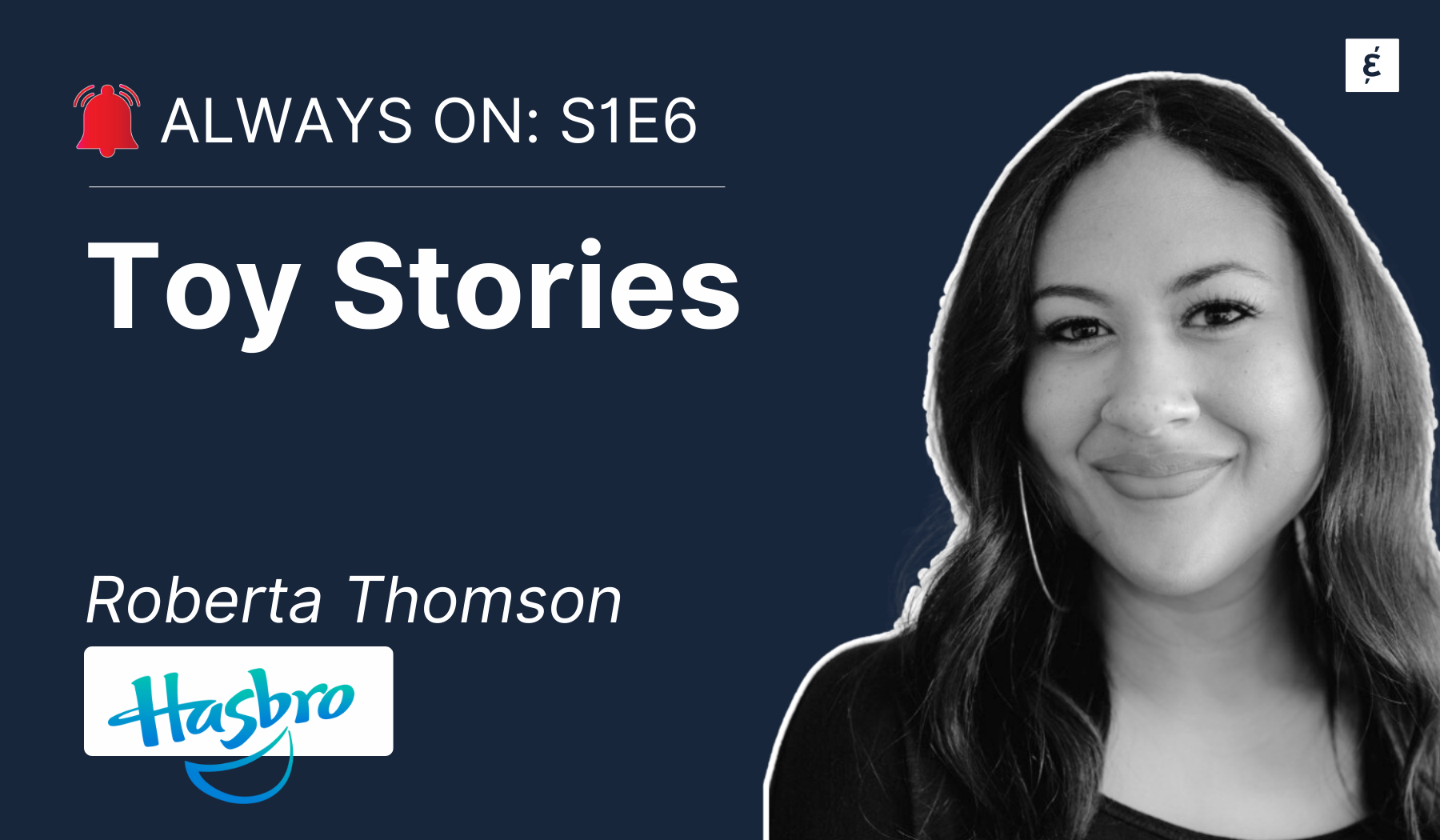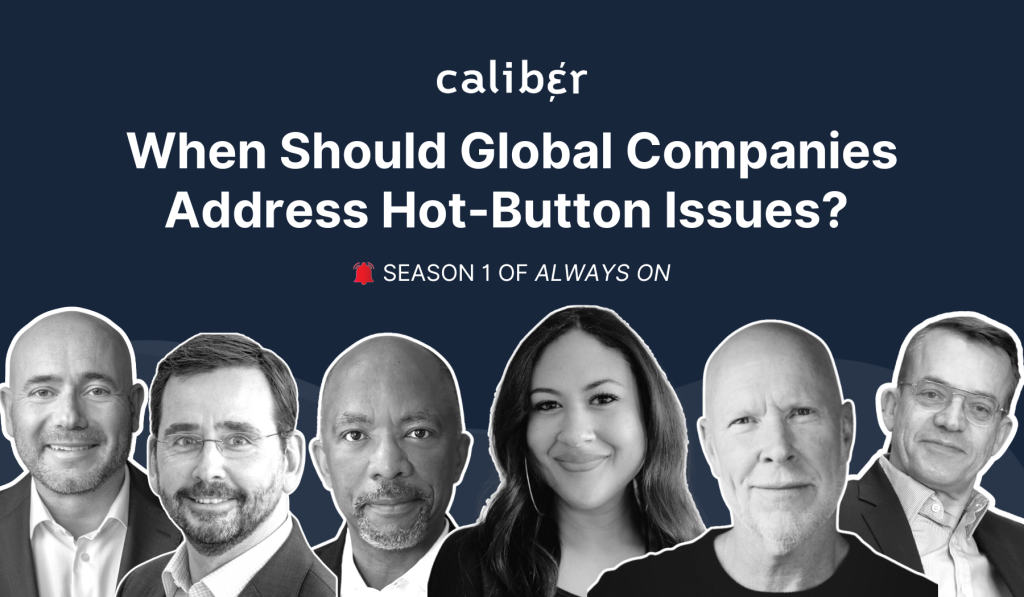

In an era of heightened social and political awareness, companies are often expected to weigh in on critical societal issues. Here, four current or former CCOs explain how they approach this nuanced responsibility.
When he was CCO at Chobani, Ben Boyd introduced a structured approach to evaluating issues, including using a scorecard to assess the appropriateness and necessity of a public stance. This tool incorporates input from diverse leadership members, including the chief people and legal officer, and gauges opinions across nine directional questions.
The scores range from “absolutely remain silent” to “speak out unequivocally,” to find a balanced consensus. Boyd, who left Chobani in November 2024 and is currently on sabbatical, told Shahar Silbershatz on the ‘Always On’ podcast that the scorecard process involved soliciting diverse perspectives, particularly from underrepresented groups within the leadership team, to ensure an informed decision.
Key to this framework was the rapid execution of the decision-making process. “The scorecard has to be completed within 12 hours,” Boyd explained, ensuring a swift response to emerging issues. This disciplined approach allowed Chobani to align its voice with its brand values and organizational priorities while mitigating risk.
ING’s CCO Kim Larsen discusses the challenge of navigating a polarized media and political landscape. In his view, the modern communication ecosystem often rewards extreme opinions, creating an environment ripe for division. “The more crazy you can sound, the more attention you get,” Larsen observes, cautioning against corporate communications that feed into this cycle.
Larsen underscores the importance of distinguishing between issues where a company’s input is necessary versus those where silence might be the more prudent choice.
For Larsen, the guiding principle is relevance and importance: “Is it important to our business? Is it important to our stakeholders?” In ING’s case, he argues for a strategic focus on core topics like sustainability and diversity, equity, and inclusion—issues deeply tied to the company’s operations and values. However, he also warns against performative statements, which can erode credibility if not backed by genuine commitment.
Larsen’s approach stresses deliberate participation: engaging only in conversations that matter to the business and its stakeholders. This, he believes, helps avoid unnecessary polarization while fostering meaningful dialogue.
Medtronic’s Chief Communications Officer, Torod Neptune, shares insights into the systematic processes that his organization has developed. He describes a “reputation issues management team,” a diverse, global group tasked with assessing both emerging and latent issues. This team evaluates potential risks and opportunities, crafting tailored responses that align with the company’s mission and values.
By preparing for likely challenges in advance, Neptune’s team ensures that the organization isn’t caught off-guard. This proactive planning complements the ability to react quickly to unforeseen developments. “That group actually generates a recommendation, and then, you know, a message or a plan,” Neptune explains, underscoring the importance of thorough deliberation.
He believes in the power of inclusive discussions, stating, “The goal of that group…is to ensure there’s spirited discussion and debate.” This broad perspective strengthens the company’s ability to address nuanced issues effectively while reinforcing its credibility with stakeholders.
Hasbro’s CCO, Roberta Thomson, emphasizes the foundational role of corporate values in determining whether to speak out. Her philosophy centers on a clear articulation of these values to guide both proactive and reactive communication strategies. “You have to…be very values-based in what you want to respond [to] or consistent,” she asserts.
Thomson also highlights the importance of preparation. While every issue is unique, having basic structures in place—such as decision-making pipelines and designated spokespeople—ensures that the company can respond quickly and cohesively. This approach enables a focus on substance over logistics, enhancing the organization’s ability to serve its stakeholders.
A recurring theme in the discussion is the interplay between the company’s brand and the CEO’s personal voice. Boyd notes that when he was at Chobani, the decision-making process sometimes involved separate evaluations for the corporate and CEO voices. While a CEO might feel compelled to address certain issues from a personal perspective, aligning this with the company’s broader strategy is crucial to avoid missteps.
Larsen raises another pertinent question: Does a CEO inherently possess the legitimacy to comment on societal issues? Unlike elected officials, CEOs lack a direct mandate from the public. However, she acknowledges that CEOs have a role in advocating for long-term perspectives on topics like sustainability and economic growth, particularly when these align with their organization’s priorities.
A key takeaway from these perspectives is the importance of balance—between engagement and restraint, advocacy and neutrality, and clarity and nuance. Speaking out on every issue risks diluting the company’s voice and alienating stakeholders, while staying silent can be perceived as apathy or complicity.
Larsen underscores the need for restraint, advising companies to focus on topics where they can make a meaningful impact. “You only want to be part of that…disagreement if it’s important to you,” he says. At the same time, Neptune advocates for transparency and dialogue, particularly on contentious topics. “The fact that there are people out there who do not fully understand what we do…is not a reason to not communicate,” he asserts. Instead, it’s an opportunity to clarify intentions and foster understanding.
The decision to speak out—or stay silent—is not one to be taken lightly. As these leaders demonstrate, it requires a disciplined approach grounded in corporate values, stakeholder needs, and societal context. Whether through structured tools like scorecards, proactive planning, or inclusive debates, organizations can navigate this complex terrain effectively.
In the words of Larsen, the goal is not to add to the noise but to contribute meaningfully. “The world doesn’t need more communication; it needs better communication,” he says. By focusing on relevance, authenticity, and unity, companies can amplify their voices responsibly, building trust and advancing progress in a polarized world.
© 2024 Group Caliber | All Rights Reserved | VAT: DK39314320